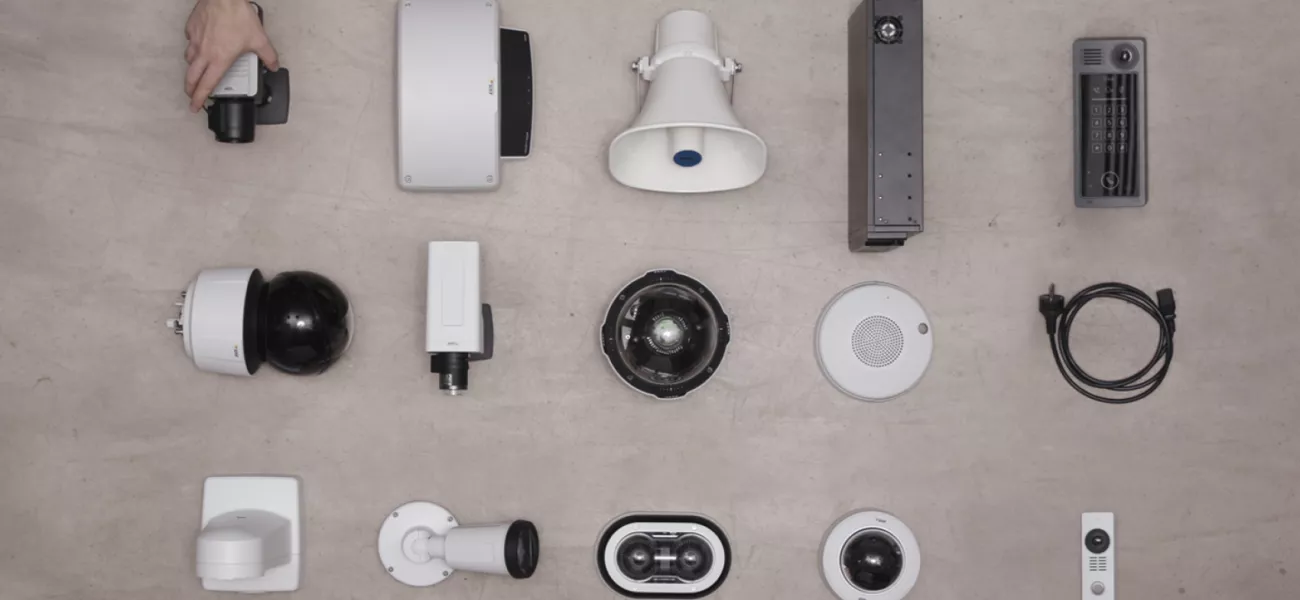
When purchasing a security system – or devices to add to an existing system – it can be easy to focus on the direct cost of new devices. Yet this initial outlay is just a small part of the system’s total cost of ownership. Factors from storage to maintenance all play a part in the total spend required, and one often overlooked element is the installation itself.
In this article, we meet José Ramón Ansó, Technical Director at Gemed Soluciones, an Axis partner specializing in cybersecurity. He explains the different factors that impact security camera installation costs, and key considerations to bear in mind when planning an installation.
Tell us about Gemed Soluciones…
Gemed Soluciones offers a range of services designed to improve organizations’ cybersecurity posture, with the view that information security is a non-negotiable today. As an integrator and Axis partner, this means working closely with customers on selecting the security system that best suits their needs and importantly, installing that system in a way that prioritizes cybersecurity at every stage.
Just as manufacturers like Axis must do their part – from providing built-in cybersecurity features to ensuring firmware doesn’t offer an easy backdoor for cybercriminals – it is also essential that integrators use the cybersecurity tools within those devices to reinforce system and network infrastructure security levels.
Even the most sophisticated surveillance devices with advanced cybersecurity features can become a route into the network for cybercriminals if installed with little thought around enabling or disabling certain services, activating security measures, and ensuring that data is encrypted and isolated from the rest of the network. This is vital: businesses need to secure their security system to protect not just their wider infrastructure, but also that of their customers and their customers’ customers.

So, what should customers bear in mind when planning their system installation?
My top recommendation is to move from thinking about “spending” on cameras to “investing” in cameras. When you “spend” money on an item or a service, you tend to think of it as a one-off expense, while “investing” focuses on obtaining the maximum return from that spend. This is the right mindset for planning a security system installation.
A lot of businesses base their decisions on the cost of devices or the cost of an installer alone, not realizing that opting for the cheaper option at these initial stages often leads to higher costs later. For example, a business might save on security camera installation costs by opting for the cheapest installer quote, only to find that the installer failed to set appropriate security protocols on the devices. The costs associated with a security breach caused by weak devices, or poorly trained installers, are incalculable – ranging from reputational damage and considerable fines to potential prison sentences for those held responsible.
It might seem logical to focus on device and installer costs. However, by failing to consider the bigger picture, such as what the organization wants to get out of the security system or the total cost of ownership over the system’s lifetime, they’re making a decision based on a fraction of the information they need.
That said, organizations cannot be expected to know everything about security systems and installation. It’s important to work with an installer who understands their requirements and sets them up for success by optimizing their chosen security system during installation. This leads to fewer problems – whether with the system itself or regulatory compliance – as well as cost savings.
What factors influence installation costs?
Many businesses focus on the number of devices to install or the size of the premises when considering installation costs, but that can be misleading. It’s important to consider a range of factors.
The time required to install and configure devices: It isn’t just about installing the new devices, but also configuring the equipment, such as setting the direction of the cameras, integrating the VMS, mounting the cameras – which can involve using sky lifts – and adding cabling where needed. Working with partners that use powerful tools to streamline system design, installation, and configuration can lead to considerable savings. Employing tools like AXIS Site Designer reduces the risk of errors, such as device installation heights or lens changes, as well as ensuring efficient system deployment through smooth integration with a VMS like AXIS Camera Station.
Partner specialization or skillset: Experienced teams with the right qualifications that invest in regular training will provide higher quality work, keeping installation timelines shorter and optimizing product life. A faulty installation can damage the system, significantly increasing repair or re-installation costs.
The state of existing networking and surveillance infrastructure: A poor quality network will cause transmission problems and outages if it cannot meet devices’ bandwidth requirements. You can navigate these potential challenges by installing high quality devices that offer smart compression technology, such as Axis Zipstream, to lower bandwidth while preserving all the forensic detail you require – removing the need to invest in significantly expanding your network.
Surveillance system storage: Any organization with a surveillance system will need to consider how to store recorded footage. This is a key consideration because storage costs extend beyond purchasing servers to server maintenance and the energy required to run – and cool – those servers. Compression technology, like Axis Zipstream, can be used to lower storage requirements by 50% or more, offering considerable savings.
Location and lighting requirements: It’s important to consider where your facilities are located when planning your installation. For example, if it is in a rural location, will you need to buy additional lighting to make the most of the security system? Without light, cameras tend to increase gain, automatically reducing image quality while increasing storage needs. This can be fixed by installing lighting to illuminate the area or opting to install devices with light-optimizing technologies such as Axis Lightfinder or Axis OptimizedIR.
Device failure or replacement rates: Think about the quality of the devices being installed, and potential failure or replacement rates: costs quickly add up when you need to replace and re-install cameras that cannot be repaired. For example, we worked on a project which involved installing 130 cameras across a distributed port environment with five separate locations. Working across a fragmented territory can make it more expensive to maintain systems, so reducing failure and replacement rates was key. Due to the quality of cameras and the installation process itself, only two return merchandise authorizations (RMAs) were processed during five years. Given that each RMA requires the installer to travel to the location, go up the post, replace the camera, pack the device, and manage its shipping and processing, it can be time intensive and costly if the number of RMAs increases.
Preventive maintenance: When a fault occurs, it takes time to determine the issue. Depending on the severity of the fault, clients may also be left without a functioning device while diagnostic tests are run. It’s worthwhile investing in devices and tools that enable efficient, and ideally preventive, maintenance. Options like AXIS Device Manager or AXIS Device Manager Extend enable easy, remote device management and troubleshooting. With information about all devices and sites in one place, it’s simple to update devices before a problem occurs, speed up accurate fault diagnoses and importantly, eliminate costly site visits.
The regulations specific to your industry: As an example, the NIS2 Directive came into force across the EU this year. Under this Directive, organizations that provide essential services, such as energy, transport, and financial market infrastructure, will have to take appropriate security measures – including securing their surveillance solutions. Some countries are going a step further and checking compliance, with severe penalties for anyone held accountable for failing to meet NIS2 demands.
Is it typically more cost effective to install a new surveillance system or upgrade an existing system?
This depends on the new system you have in mind to install or the current system which you plan to upgrade. Either way, my recommendation is to map out all the variables that would introduce costs during the system’s lifetime and calculate which option suits your needs best, as well as offering the greatest return on investment.
Crucially, the devices you choose and the installer you work with will have a knock-on impact on indirect costs. By opting to install higher quality cameras, the initial outlay may be more expensive than if you had bought cheaper alternatives, but you save in the long-term through lower bandwidth and storage needs, fewer maintenance requirements and a reduced failure or replacement rate.
By analyzing the impact different devices will have on the total cost of ownership, you can determine all the scenarios available to you and make the best decision for your requirements. As an example, we work with a major port in Spain that requires cameras to work in tough environmental conditions due to the salt water, dirt, and humidity. By installing devices with the most appropriate materials, such as hydrophilic and anti-scratch domes or self-cleaning capabilities, the port has reduced how frequently each device needs to be cleaned. This adds up to significant savings – cutting the costs associated with not only the time it takes to clean them but also the cranes required to reach each camera.
How can businesses work with partners to reduce installation costs?
Above all, companies need to be able to calculate all the costs associated with the system they plan to purchase and install, before they go ahead with buying it. This can be complicated and a considerable investment of their resources, so it’s worth finding a qualified, experienced and, above all, reliable integrator they can trust to help them map this out. Taking this approach reduces the likelihood of “surprise costs”, either at the installation stage or once the system is up and running.